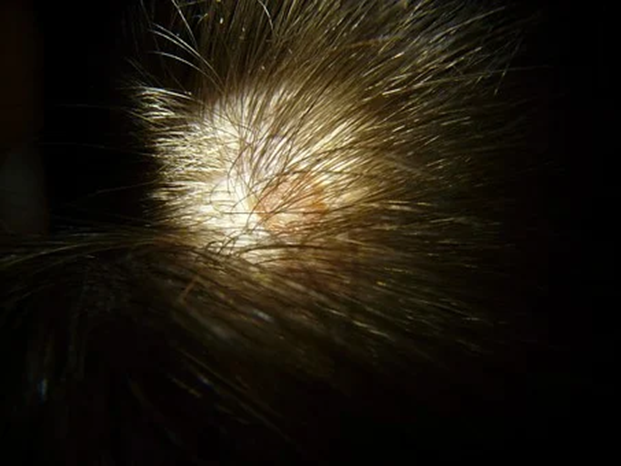Hair loss is a common skin condition that millions of people face. There are different hair loss types caused by different triggers, some hereditary, some reactive, but one of the common hair loss diseases is called Alopecia Areata.
What is Alopecia Areata?
Alopecia Areata is an autoimmune disease on the skin that causes hair loss in the scalp and other body parts. This disease is not particular to any ethnic race or gender. It can affect both men and women of all ages, and it is prevalent throughout the world.
Alopecia areata treatment in Pune is available for anyone experiencing this condition. To understand what it is, this skin condition commonly appears as patches of hair loss throughout the scalp and the body.
When people experience a complete loss of hair on the scalp, it is known as Alopecia Totalis. In extreme cases, when they experience complete hair loss in their whole body, it is referred to as Alopecia Universalis.
Common Causes of Alopecia Areata
Alopecia areata is a disease that is caused by the genetic makeup of the body. Sometimes, it is a hereditary condition that is passed down from one generation to the next. Other times, it is an autoimmune reaction that mistakenly attacks one’s hair follicles.
The white blood cells in the body consider hair cells as foreign objects and try to protect the body from them, ultimately causing hair loss.
What are the Symptoms of Alopecia Areata?
The most recognizable symptom of alopecia areata is the appearance of small, round, coin-sized patches of hair loss on the scalp. Although, this can extend to the beards and lashes on the face and other areas of the body containing hair.
One might experience itching or a burning sensation on the affected areas before the hair completely sheds. In some instances, hair loss is experienced suddenly. However, one should take note that despite the loss of hair, the follicles are not utterly destroyed. There is still a chance of hair regrowth.
Some people completely recover from alopecia areata in just a year. For others, it’s a continuous series of hair loss and regrowth. Roughly around ten percent of patients experience further disease development, resulting in alopecia totalis or alopecia universalis.
Apart from hair loss, there are clinical signs that point to the formation of skin disease. One of these is exclamation mark hairs which means that the hair strand becomes thinner at the ends.
Another sign is known as cadaver hairs that die or break off before reaching the surface of the skin. The growth of white hair on affected areas can also be a symptom of alopecia areata. Other common symptoms affect not just the hair but also one’s nails.
Some telltale signs of this disease include roughness of the nails, losing a shine on the nails, the appearance of white spots and lines, and thinning and splitting of nails.
Once symptoms arise and appear more consistently, it is time to approach a trusted doctor and consult about the condition. The more people are aware of alopecia areata, the more precautions they can take to prevent any disease development.
The Best Solutions to Solve Alopecia Areata
Considering that people experience the disease differently, certain treatments can be effective for some, while others require a different approach and solution. Finding alopecia areata treatment in Pune is not at all difficult if one knows where to look.
Facilities like HairMD have trusted sources of hair experts that provide valuable knowledge to target hair conditions. They offer a list of options and alternatives to address the problem. They also specify the type of people that the treatment or procedure applies.
Before going to extreme procedures, people with alopecia areata can try non-invasive solutions and home remedies to combat hair loss. Corticosteroids are a potent topical solution that can be applied to affected areas of hair loss to reduce inflammation around the follicles.
They come in different brands offering different strengths and dosages. They can also be applied as an ointment, injection, or oral medicine.
Topical steroids are one of the most effective non-invasive hair treatments that reduce hair loss and promote hair growth improvement. However, this kind of medication is heavily dependent on how well the scalp and the skin absorb it.
Another natural way to combat this condition is to boost one’s immunity by taking probiotics. Including zinc and biotin in one’s diet and daily supplements has proven to be a helpful combative since these minerals are known to strengthen and repair hair tissues.
Occasional aromatherapy and massages also show significant results. Aloe vera, coconut oil, and tea tree oil are some of the products that can treat this condition. For severe cases, doctors recommend topical immunotherapy.
This is one of the best and most effective treatments, especially for patients experiencing more than 50 percent hair loss. It involves applying different chemicals to the scalp, which alters the immune system’s response. The results of this procedure will appear in six months’ time.
There are countless possibilities to address alopecia areata, so there’s no need to fear. Doctors and hair specialists are continually making improvements and discoveries to better advise their patients. All the people have to do is be open to trying different procedures.









